Last Updated on May 29, 2024
How to Convince with Your Words and Stay Top of Mind
Our concentration is on the decline. We can only pay attention to a screen for an average of 47 seconds. Not a lot of time for a lot of words.
So, what is the purpose of your content? Is it sales, lead generation, or simply informative? It’s not only the words you choose that matter; the reason matters too.

- How Should We Write?
- Writing Tip #1: The PSP Principle: Problem, Solution, Proof
- Writing Tip #2: The Problem Agitate Solution Formula
- Writing Tip #3: The PASTOR Technique
- Writing Tip #4: The AIDA model
- Writing Tip #5: Try Being FAB! Feature-Advantage-Benefit
- Bonus Tip: How to Write Headlines and Titles
While we can’t determine an exact average attention span for online reading, it’s likely shorter than reading print media (think 8 seconds online compared to 12 for print).
However, engagement trumps pure reading time, as people often skim headlines and key points. The type of content also plays a role – we will spend more time reading an article than scrolling through social media. Hopefully.
💡 Studies show that the average visit to a website takes less than a minute, with users often leaving the site quickly. They may also only read a fraction of the text on a page. The conclusion? Engage readers quickly and keep your content clear and engaging.
“In 2004, we measured the average attention on a screen at 2½ minutes,” says Mark. “A few years later, we realised that the attention span was around 75 seconds. Now we find that people can only pay attention to a screen for an average of 47 seconds.” Dr Gloria Mark
Convince with Words and Stay Top of Mind
There are a lot of words out there. We are expected to read most of them. We are probably expected to memorise some of these words too: Features, USPs, and Sales dates. As consumers, we are given a lot of responsibility.
🔎 The average blog post length varies depending on the source, but is generally between 1,400 and 3,000 words.
🔎 The average email is much shorter, usually around 50-150 words. People’s attention spans are shorter with emails, so getting straight to the point is important.
🔎 Adverts are even shorter than emails. The average length of ad copy depends on the format (banner ads, social media ads, etc.), but is usually under 100 words, sometimes as short as a single headline.
How can you write so that people will read and remember your words?
What’s the difference between copywriting and my website content? Copywriting drives quick action (buy, subscribe). Helpful content builds trust & value (SEO magnet).
How Should We Write?
Your website needs content. Great content.
What sort of copy should you write? The copy should fulfil the intent of the person reading. Are they looking for answers? Just curious? Are they ready to buy?
📝 Here is an example, showing the difference between the three intents:
Text for Different Contexts: Information, Interest, Selling
The way you write text depends on what you want to achieve. Here are some examples for each of the three situations:
This comprehensive YouTube course covers everything you need to master [your course topic]. It includes in-depth lessons, clear explanations, and practical exercises. (Informational)
Ever dreamed of learning [your course topic]? This YouTube course is your one-stop shop! Unlock your full potential and become a [topic] expert in just [timeframe]. (Sparking Interest)
Struggling to learn [your course topic]? This YouTube course is the key to your success! Join me and master the secrets of [topic] with easy-to-follow lessons, actionable tips, and a supportive community. Enrol now and transform your skills! (Selling)
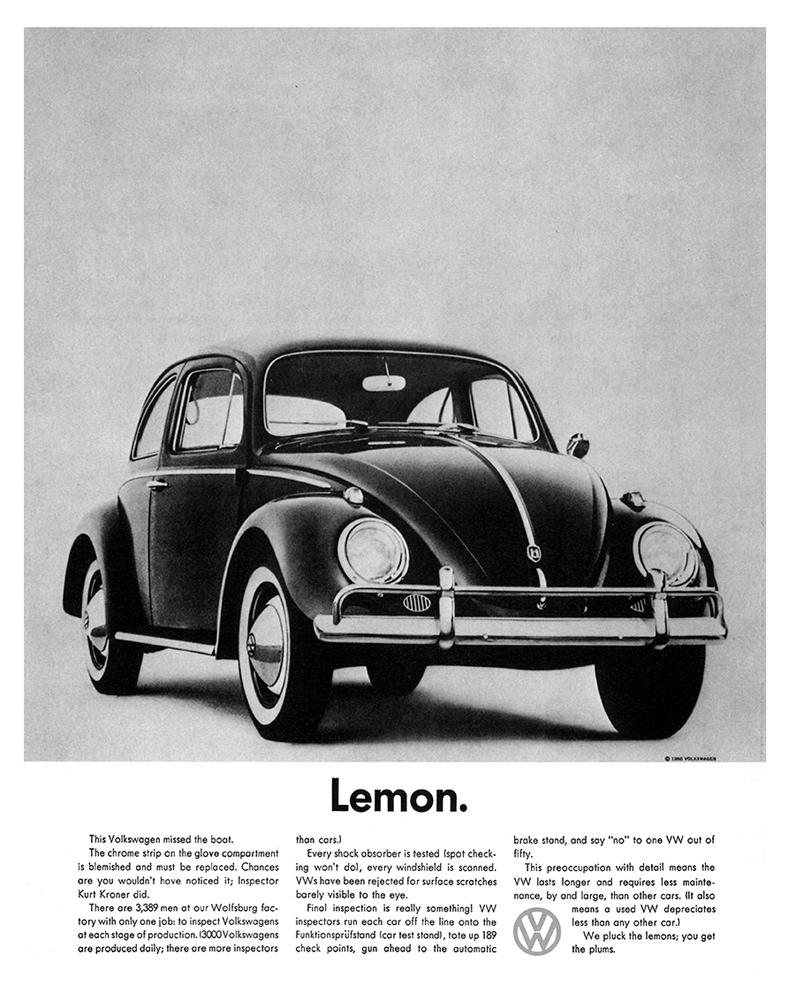
- + Speak like your audience
- + Use appealing images
- + Keep your content short and simple
- + Include a call to action
“Lemon”, is a classic example of great copywriting. 🍋
‘Lemon’ advertising for the Volkswagen Beetle 1960, by Doyle Dane Bernbach
Image https://www.researchgate.net/figure/Lemon-advertising-for-the-Volkswagen-Beetle-1960-by-Doyle-Dane-Bernbach_fig5_306040740
💡“You cannot write copy unless you know: Who you’re writing it for, How that person thinks, and What that person needs.” David Ogilvy, the Father of Advertising. Read one his books.
Writing Tip #1: Try the PSP principle = problem, solution, proof
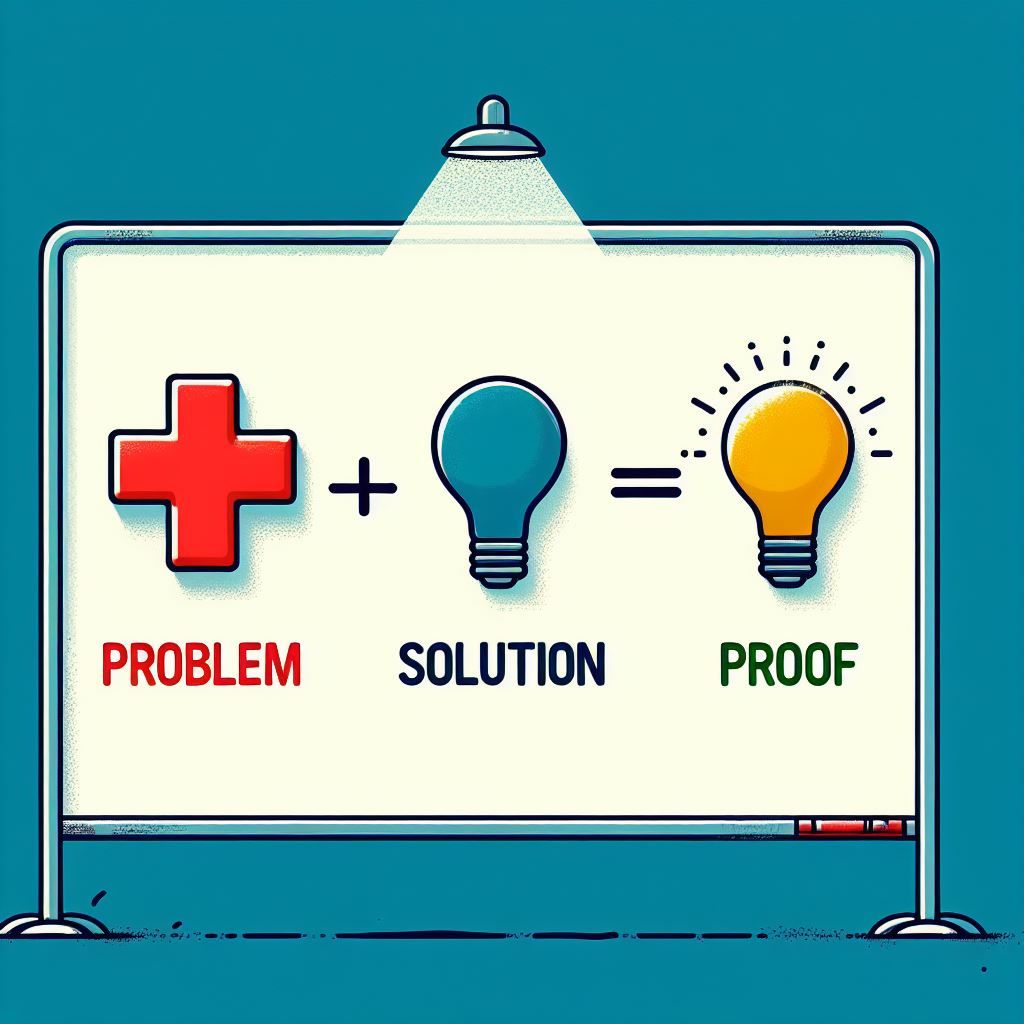
Hard time with your writing short game? Online, less is more. It’s not easy writing for the web.
There are a few techniques you can use.
📝 Here is one: the PSP principle = Problem, Solution, Proof.
- Explain the problem in one sentence.
- The next sentence contains the solution.
- The third sentence proves how the solution works.
🤷 Do you want to grow your YouTube channel and get more views? (Problem)
💡 The trick is to focus on topics that people are searching for. (Solution)
📢 This approach has helped us grow our YouTube channel from 10,000 to over 200,000 monthly views within a year. (Proof)
Writing copy for a landing page? PSP is really useful not only for sales and lead generation but also for SEO and for your online shops.
Writing Tip #2: Try the Problem Agitate Solution Formula (PAS)
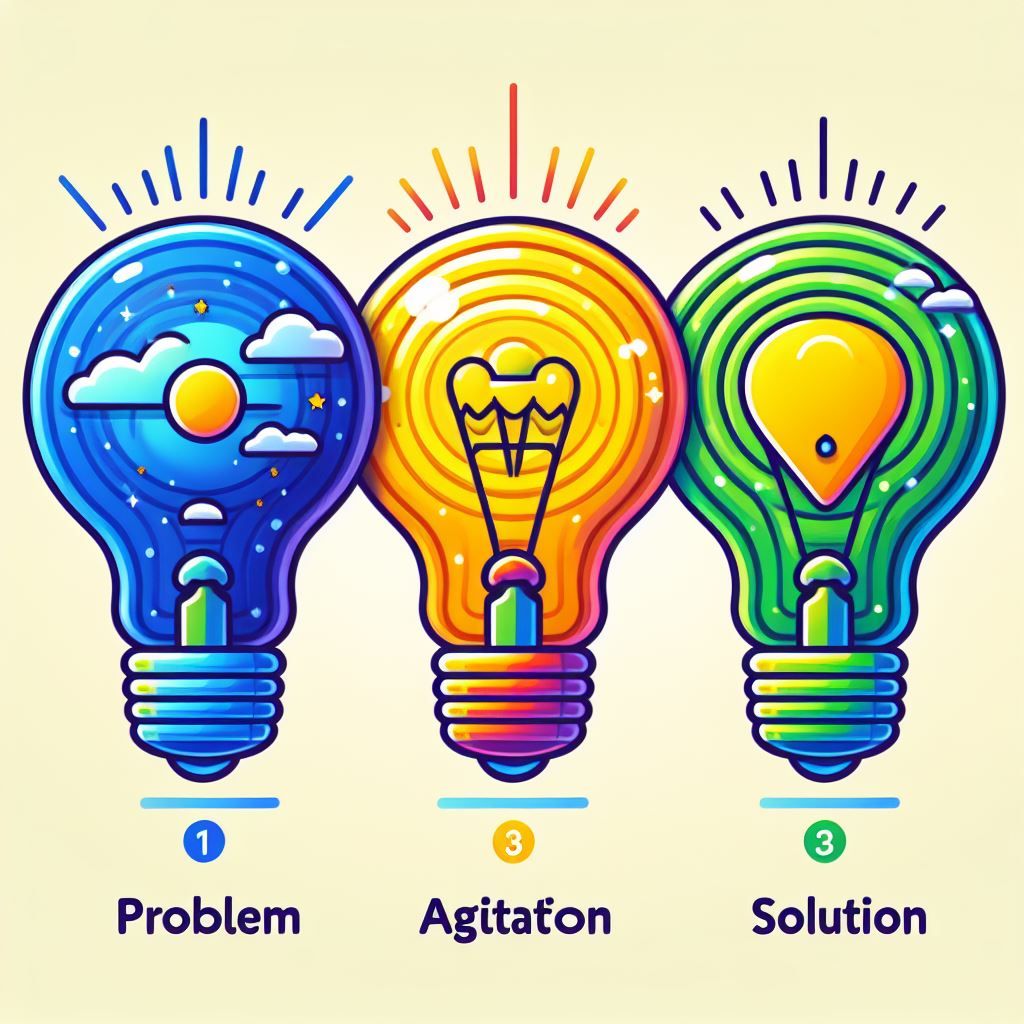
We’ve seen how the PSP format can be used in your writing to promote a YouTube strategy.
Here is another technique you can use. BTW these techniques can be used for all your writing needs: blog posts, product descriptions, landing page calls-to-action, and even social media posts.
💡 Focus on the benefits of your product or service – not the features.
Problem Agitate Solution Formula
The problem-agitate-solve, also known as the PAS formula is based on the idea that people tend to buy products or services that solve their problems.
Using PAS for your YouTube copy
Problem: You have a YouTube channel, but it’s not growing as fast as you’d like.
Agitate: Imagine how frustrating it is when you put a lot of time and effort into your videos, but hardly anyone watches them.
Solution: The key to success on YouTube is to create videos that are searched for by your target audience. We’ll show you how!
Writing Tip #3: Try the PASTOR Technique (Problem-Agitate-Solution-Transformation-Offer-Response)
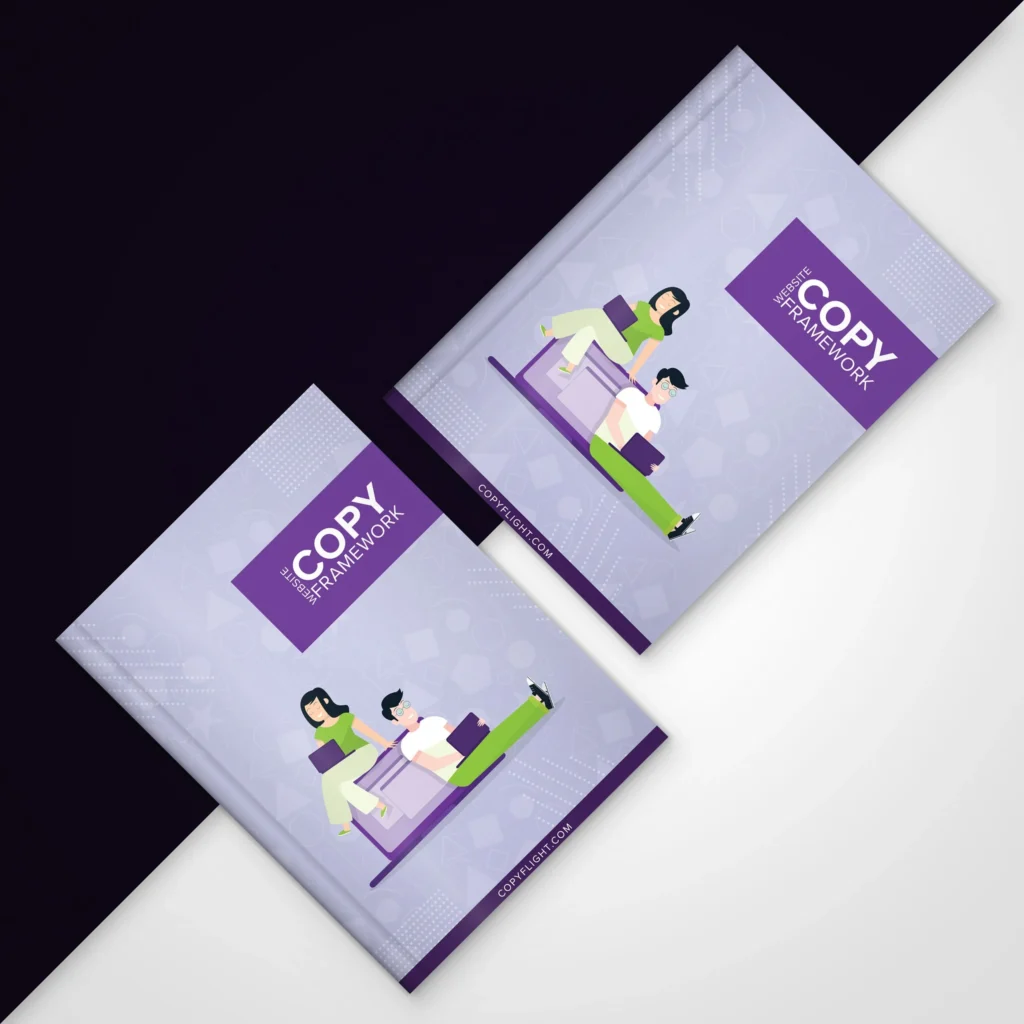
While looking at the PAS concept, I saw the copywriting template offered by my colleague Todd Jones @tejones Todd goes one step further with the PASTOR formula (Problem-Agitate-Solution-Transformation-Offer-Response).
The PASTOR method is an acronym that helps you create compelling copy, whether it’s a newsletter, an article or a landing page: Problem, Excitement, Solution, Conversion, Offer, Response.
“Think about it – How are you different from other service providers? There are hundreds of service providers out there and people are trying to make up their mind. So – what is your story? When the benefits of your story meet the needs of your customer; that’s when the magic happens.” Todd Jones
Here’s the PAS formula extended to PASTOR for our YouTube example:
Problem: You’ve put your heart and soul into creating YouTube content, but your channel’s growth seems to stagnate. You want more viewers, subscribers and engagement, but you don’t know how to make it happen.
Agitate: Imagine all the potential viewers you’re missing out on. Think of the impact your content could have on a larger audience. This lack of growth can be discouraging, but it doesn’t have to be permanent.
Solution: There are proven strategies to turn your YouTube channel into a thriving community.
Transformation: By optimising your content, engaging with your audience and strategically promoting your channel, you can dramatically increase views, subscriptions and dwell time.
Offer: Let’s explore these strategies together. I can give you actionable tips on keyword research, thumbnail creation, audience engagement techniques and effective promotion methods.
Reponse: Are you ready to take your YouTube channel to the next level? Let’s get started! (Include a call to action, such as signing up for a course or creating a guide.
Copyflight (https://copyflight.com Todd’s company) offers a great framework for web copy. I find it really helps to make the whole process clearer. So, I bought it (you can get it on Gumroad) and gave it to my students as part of their assignment this week. I’m also going to use it to help clean up my own website content.
BTW this is not an affiliate promotion. This is just people supporting each other. Here’s a short demo of the Website Copy Framework too. Check it out.
Writing Tip #4: Try the AIDA model (Attention-Interest-Desire-Action)

Probably the best-known marketing model is the AIDA model. It’s a simple but effective model for describing the customer buying process. It describes the four phases that a customer goes through before making a purchase decision.
AIDA is extremely useful for everything from creating an ad to a social media post. Landing Pages are built around this model as well. AIDA is important if you want to get people to quickly take notice, smile, and act.
Using AIDA for your YouTube copy
Attention: Exploding YouTube channel: From 10,000 to 200,000 views in 1 year.
Interest: Quick learning success: Learn the basics in just 1 day.
Desire: Get your free trial lesson now and see the quality of the course for yourself.
Action: Click now and start your free trial lesson today!
Writing Tip #5: Try Being FAB! The Feature-Advantage-Benefit

The Feature, Advantage and Benefit is a marketing technique used to describe products or services in a way that is relevant and appealing to potential customers.
How can we use it for our YouTube social media course?
Feature: The social media course includes over 20 video lessons with step-by-step instructions and exercises.
Advantage: You can learn anytime, anywhere, whenever you have 10 minutes.
Benefit: Creating your own videos saves you money compared to a professional video designer.
Bonus Tip: How to Write Headlines and Titles
What do you read first? Second? Third? 80% of the story is in the title.
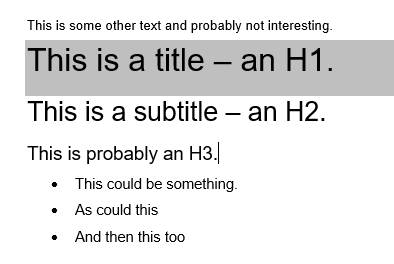
Writing headlines? Here’s something you should know about the difference between headlines and content.
- Headline: A movie trailer – exciting, attention-grabbing, and gives a glimpse of what’s to come.
- Copy: The full movie – provides the details, story, and keeps you engaged.
To use a fishing analogy, headlines are the hook, and copy is the reel. They work together to draw the reader in and provide the information they need.
Headline and Title Formula that I Like to Use
# / adjective / your keyword/benefits (trust)
7 simple ways to improve your cooking skills (Spring 2024)
8 best WordPress security plugins to protect your website (2024)
Read more about the importance of titles and headlines for your SEO here: https://www.semrush.com/blog/seo-headline
Titles, Headlines, and Your SEO
Titles and Headlines are a critical part of SEO. Why? They are what you see most quickly in the SERPs. Your keywords – what people are looking for – are a part of your page title, the headlines, and your copy. (example below: which is the better title?)
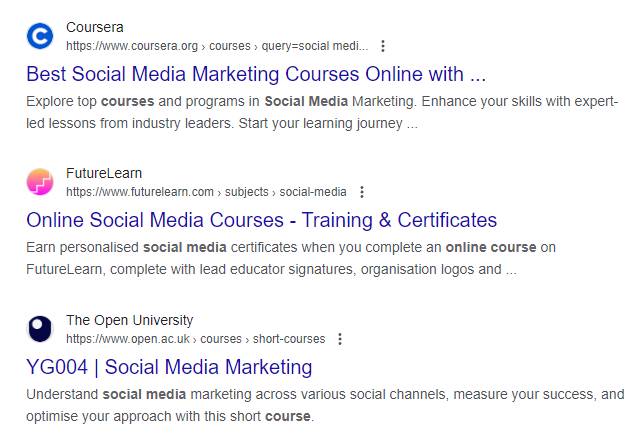
Need some help improving your headlines and titles? I really like the Sharethrough tool: https://headlines.sharethrough.com
Why is Good Writing Important?
Your website is words. Not convinced? Remove all the words from your website. Search engines need words. Social media need words. Shoppers need words. People need words.
People don’t buy products, they buy stories and the emotions behind them. They want to read texts that tell them how they can solve their problems. They want to be inspired and involved.
If you want to connect with people, they need to like and trust you.
With effective content, you can build trust and customer loyalty. And that’s worth more than just a few words.
Interested in sharing your thoughts on this topic? Join me on Twitter/X – we’ve been talking about it there: https://twitter.com/WarrenLNaida/status/1787360740136890526
Article image thanks to Ivan Samkov: https://www.pexels.com/photo/woman-working-in-home-office-4240505/ AI images from DALLE Bing image creation Generated with AI ∙ May 8, 2024 at 7:53 AM